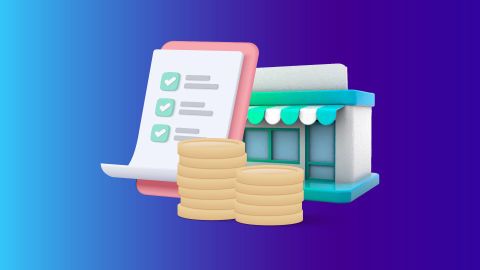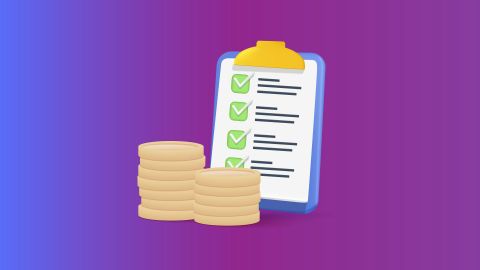Examples of e-business
Here are some examples of e-business organisations:
- Online retailers: Businesses that sell goods and services exclusively through websites and digital platforms, reaching global markets without physical storefronts.
- Ride-hailing services: Platforms that connect drivers and passengers through mobile apps, disrupting traditional taxi and livery services with digital convenience.
- Travel platforms: Websites and apps that enable users to plan and book trips, offering personalised options such as accommodation, transportation, and activities.
- Legacy companies with digital transformation: Traditional businesses integrating e-business strategies like IoT and digital technologies to enhance products or services and streamline operations.
These examples highlight the diverse applications of e-business across industries, leveraging digital technologies to innovate and improve efficiency.
Features of e-business
Some features of online business are:
- Easy to set up
- No geographical limits
- Cheaper than traditional businesses
- Flexible working hours
- Lower marketing costs
- Often receive government subsidies
- Few security and integrity problems
- No personal interaction
- Buyer and seller do not meet in person
- Product delivery can take time
- There is transaction risk
- People can buy anything from anywhere at any time
- Transaction risk is higher compared to traditional businesses
Components of e-business
E-business comprises several key components:
- E-commerce platforms: Websites or apps where goods and services are traded.
- Customer Relationship Management (CRM): Systems that help manage a company’s interactions with current and potential customers.
- Enterprise Resource Planning (ERP): Integrated software used to manage day-to-day business activities such as accounting, procurement, project management, and manufacturing.
- Supply Chain Management (SCM): The oversight of materials, information, and finances as they move from supplier to manufacturer to wholesaler to retailer to consumer.
Benefits of e-business
There are several benefits to conducting business activities through e-business, such as:
- Global reach: E-business allows businesses to reach a global audience regardless of location. This can lead to increased sales and market share.
- Cost-effective: E-business can be more cost-effective compared to traditional brick-and-mortar businesses. This is because e-businesses require less overhead, such as rent and utilities.
- Increased efficiency: E-business allows businesses to automate various business processes, leading to increased efficiency and productivity. This may include inventory management, order processing, and customer service.
Function of electronic business
The key function of electronic business is electronic value creation. That is, generating added value through digital platforms and processes. This value helps improve how businesses operate, interact with customers, and deliver services online.
Electronic value comes in different forms, depending on how a business uses its digital tools:
- Structuring value: Helps users get a clear view of large amounts of information, making it easier to understand.
- Selection value: Allows users to request and access specific data from a digital database.
- Matching value: Connects buyers and sellers more effectively by merging supply and demand.
- Transaction value: Makes business operations more efficient by speeding up processes.
- Coordination value: Helps different providers work together and offer combined services.
- Communication value: Improves interaction and information sharing between customers or user groups.
Based on the type of value they want to offer, businesses can carry out different activities like collecting, organising, filtering, summarising, or sharing information. These efforts often result in what is known as a digital information product, something valuable enough that customers are willing to pay for it. This could include a blog, website, comparison platform, e-book, or software application.
The process of creating electronic value typically follows these steps:
- Collect information: Gather large volumes of data relevant to your service or product.
- Process data: Analyse and refine the information to create something useful.
- Deliver to the customer: Share the final digital product or service online.
- Keep it updated: Continue updating the content as new information becomes available.
Digital products are dynamic and must evolve regularly to stay relevant.
Apart from creating value, e-businesses should also plan for long-term objectives. This may include automating routine commercial tasks, improving efficiency, or building new digital models such as selling directly to consumers and removing intermediaries.
Overall, electronic business helps companies deliver smarter services, connect better with their audience, and stay competitive in a digital world.
How does e-business work?
E-business entails several steps and components. Here are the key components of e-business:
- Website: A website is the core component of an e-business. It serves as the virtual storefront and provides the platform for all online transactions.
- Electronic payment system: An electronic payment system allows businesses to accept payments online. This can include credit card payments, bank transfers, or digital wallets.
- Secure server: A secure server ensures that all online transactions are secure and safe.
- Customer support system: A customer support system allows businesses to provide support to customers through various channels such as email, chat, and phone.
- Marketing strategies: E-business requires effective online marketing strategies to reach and engage customers. This may include social media marketing, email marketing, and search engine optimisation (SEO).
Types of e-businesses
E-business can be categorised into several types:
- B2C (Business-to-Consumer): Direct sales between a business and the end-user consumer.
- B2B (Business-to-Business): Transactions between businesses, such as between a manufacturer and a wholesaler, or between a wholesaler and a retailer.
- C2C (Consumer-to-Consumer): Where consumers sell directly to other consumers, typically through online platforms.
- B2G (Business-to-Government): Companies provide products or services to government agencies.
- C2B (Consumer-to-Business): Consumers offer products or services to businesses.
- Mobile Commerce: Buying and selling goods through mobile devices.
- Social Commerce: E-commerce conducted via social media platforms.
- Marketplace: A platform that facilitates transactions between multiple buyers and sellers.
Challenges of e-business
The challenges of running an online business differ from one company to another, depending on several factors such as whether the company started online, if online services are crucial to its main offerings, if only some parts of the company use online services, and if the company uses old technology. Despite these differences, common challenges in e-business include:
- Protecting online services from advanced cyber threats
- Quickly scaling services to meet demand without losing performance
- Updating technologies to keep up with market changes
- Finding and training skilled workers to handle advanced technologies
- Keeping up with the constant demands of online services
Many companies also find it hard to integrate their separate data and functions so that they work well together.
Electronic business vs. electronic commerce
The terms e-commerce and e-business are often used interchangeably, but they have distinct meanings. The table below highlights their key differences based on various aspects:
Aspect
|
E-business
|
E-commerce
|
Definition
|
Involves conducting all types of business operations through digital platforms
|
Involves only the buying and selling of goods and services online
|
Scope
|
Broader in nature, includes e-commerce and other business functions
|
Narrower in focus, it forms a part of e-business
|
Nature of Transactions
|
Covers a wide range of business transactions
|
Limited to commercial transactions such as sales and purchases
|
Key Activities
|
Includes supply chain coordination, inventory management, customer support, and financial operations
|
Focuses mainly on online product listings, sales, and payment processing
|
Tools Required
|
Utilises ERP systems, CRM software, websites, intranet, and extranet
|
Primarily requires a functional website or online storefront
|
Internet Dependency
|
May use internet, intranet, or extranet for various processes
|
Heavily dependent on the internet to operate
|
Business Models
|
Best suited for Business-to-Business (B2B) models
|
Commonly used in Business-to-Consumer (B2C) models
|
Operational Coverage
|
Manages both internal processes and external interactions
|
Mostly handles external-facing operations like customer transactions
|
While e-commerce and e-business differ in scope and function, they are closely linked and often work together to enhance overall business performance. As digital technology continues to evolve, both concepts are playing a major role in reshaping modern business practices.
How to start an e-business in 7 steps?
Starting an e-business involves careful planning and execution. Here are seven essential steps to guide you through the process:
- Market research: Identify your target audience, assess market demand, and analyse competitors to understand market trends and opportunities.
- Business plan: Develop a comprehensive business plan outlining your e-business model, products or services, pricing strategy, marketing approach, and financial projections.
- Legal considerations: Register your business, obtain necessary permits and licenses, and ensure compliance with relevant laws and regulations, including data protection and online sales regulations.
- Choose a platform: Select an e-commerce platform or build a custom website that suits your business needs and budget, considering factors like design, functionality, scalability, and payment options.
- Product sourcing: Source or develop high-quality products or services to offer to your target market, ensuring competitive pricing and reliable supply chains.
- Marketing and promotion: Implement a comprehensive marketing strategy to attract customers, including search engine optimisation (SEO), social media marketing, content marketing, and email campaigns.
- Launch and iterate: Launch your e-business, gather feedback from customers, analyse performance metrics, and continuously iterate and improve your offerings and marketing efforts to optimise success.
By following these steps, you can lay a solid foundation for launching and growing a successful e-business.
Limitations of e-business
The limitations of e-business are as follows:
1. Low personal touch:
E-business lacks personal interaction, which is important for some types of businesses like clothing and toiletries. Even though it is advanced, it does not provide the personal touch that some customers prefer.
2. Delay between ordering and receiving products:
While placing an order online is instant, the physical delivery of products can take time. Technical issues like slow websites or server problems can also frustrate users, creating a mismatch between ordering and receiving products quickly.
3. Need for technology skills:
To engage in e-business, both businesses and customers need to be comfortable with technology and computers. This can create a digital divide, as those who are not tech-savvy may miss out on the benefits of e-business.
4. Higher risk due to anonymity:
It is hard to verify the identities of the parties involved in online transactions. This anonymity increases the risk of fraud and security issues like impersonation and information leakage. There are also risks from viruses and hacking.
5. People resistance:
Many people resist e-business due to the need to adapt to new technologies and methods, which can cause stress and insecurity. This resistance can hinder an organisation's move to e-business.
6. Ethical issues:
E-business can raise ethical concerns. For example, companies might monitor employees' computer files and emails, which can be considered unethical if used against them.
Why you need a business loan for e-business?
Starting an e-business requires a significant amount of investment, and securing a business loan can provide you with the necessary funds to grow your business. Here are some common reasons to apply for a business loan for your e-business:
- Create or improve a website: Your website is the face of your e-business, and creating or improving a website can require significant investment.
- Marketing: Marketing is an essential aspect of any business, and e-businesses require effective online marketing strategies to reach more customers.
- Inventory: Purchasing inventory can be a significant investment, especially for an e-business, where inventory must be stored and shipped.
- Technology: E-businesses require the latest technology to compete in the online marketplace, and securing a loan can help finance these investments.
Bajaj Finserv business loans are designed to help businesses meet their funding requirements. These loans cater to businesses of different sizes, offering a range of loan amounts and repayment schedules. Here are some benefits of opting for our business loan:
- High loan amount: Our business loans offer a high loan amount of up to
Rs. 80 lakh.
- Flexible repayment options: We provide flexible repayment options ranging from 6 months to 96 months.
- No collateral: Business loans from Bajaj Finance do not require any collateral or guarantors, making it accessible to businesses of all sizes.
- Online application: Businesses can apply for a loan online, making the application process quick and convenient.
- Fast disbursal: Our business loans offer fast disbursal of funds, providing quick access to funding.
- Attractive interest rates: We offer competitive interest rates, making them an attractive option for businesses.
E-business has become an essential part of modern-day commerce, leading to increased efficiency, cost-effectiveness, and global reach. If you need funding to start an e-business, consider Bajaj Finserv Business Loan. With fast approval times and a simple application process, we make securing funding for your business easy and hassle-free.
Security and risks of E-business
As businesses increasingly shift to digital platforms, ensuring the security of online operations becomes essential. While e-business offers convenience, efficiency, and global reach, it also brings several security challenges and risks that need to be managed carefully.
Common security risks in e-business
- Data breaches: Unauthorised access to sensitive business or customer information, such as payment details or personal data, can lead to serious financial and reputational damage.
- Phishing and fraud: Attackers may impersonate legitimate services to steal login credentials or financial information through fake emails, websites, or links.
- Malware and viruses: Malicious software can disrupt operations, steal data, or lock systems until a ransom is paid (ransomware).
- Identity theft: Hackers may use stolen personal or business information to commit fraud or unauthorised transactions.
- System downtime: Cyberattacks or poor security infrastructure can lead to outages, interrupting business continuity and customer service.
- Lack of compliance: Not adhering to data protection laws like GDPR, IT Act, or PCI-DSS standards can lead to penalties and legal consequences.
Key security measures for e-business
- Encryption: Securing data transmission through SSL certificates and encryption protocols protects sensitive information from interception.
- Firewalls and antivirus protection: Installing reliable security software helps prevent unauthorised access and malware infections.
- Two-factor authentication (2FA): Adding an extra layer of login security helps reduce unauthorised access to business systems.
- Regular data backups: Creating consistent backups protects against data loss in the event of a breach or system failure.
- Employee training: Educating staff about online threats, phishing, and secure practices helps build a strong human firewall.
- Compliance and audits: Following industry regulations and conducting regular security audits ensure that systems remain protected and up to standard.
E-business success depends not just on technological advancement, but also on how securely that technology is used. Proactively addressing these risks allows businesses to build trust, protect their reputation, and operate efficiently in the digital space.
Future outlook for E-business
The future of e-business looks promising, with continuous advancements in technology and changing consumer behaviour driving its evolution. As digital transformation accelerates across sectors, e-business is expected to become even more central to global commerce and operations.
Key trends shaping the future of e-business
- Wider adoption of artificial intelligence (AI): AI will play a key role in personalising customer experiences, automating routine tasks, improving customer service through chatbots, and enabling smarter data analysis.
- Growth of mobile commerce: With smartphone usage on the rise, mobile-friendly platforms and apps will become essential for businesses to remain competitive and accessible to customers.
- Integration of blockchain technology: Blockchain will enhance transparency and security in online transactions, supply chains, and digital contracts, building greater trust in e-business processes.
- Cloud-based operations: Cloud computing will continue to support scalability, remote access, and cost efficiency for businesses of all sizes.
- Data-driven decision-making: E-businesses will increasingly rely on big data and analytics to understand customer preferences, predict market trends, and make informed strategic decisions.
- Omnichannel commerce: Businesses will focus on providing seamless experiences across online, mobile, and physical touchpoints, integrating various platforms into a unified customer journey.
- Sustainability and digital ethics: Consumers are becoming more environmentally conscious, prompting e-businesses to adopt sustainable practices and ensure ethical use of data and technology.
Opportunities ahead
- Global reach: E-business removes geographical barriers, allowing even small enterprises to access international markets and expand their customer base.
- Customised offerings: Advances in technology will allow businesses to offer hyper-personalised products and services, increasing customer engagement and loyalty.
- Cost efficiency: Automating backend processes and using digital platforms can reduce operational costs and increase profitability over time.
E-business is set to become more intelligent, agile, and customer-centric in the coming years. Companies that embrace innovation, invest in digital infrastructure, and prioritise data security will be best positioned to thrive in the digital economy of the future.






